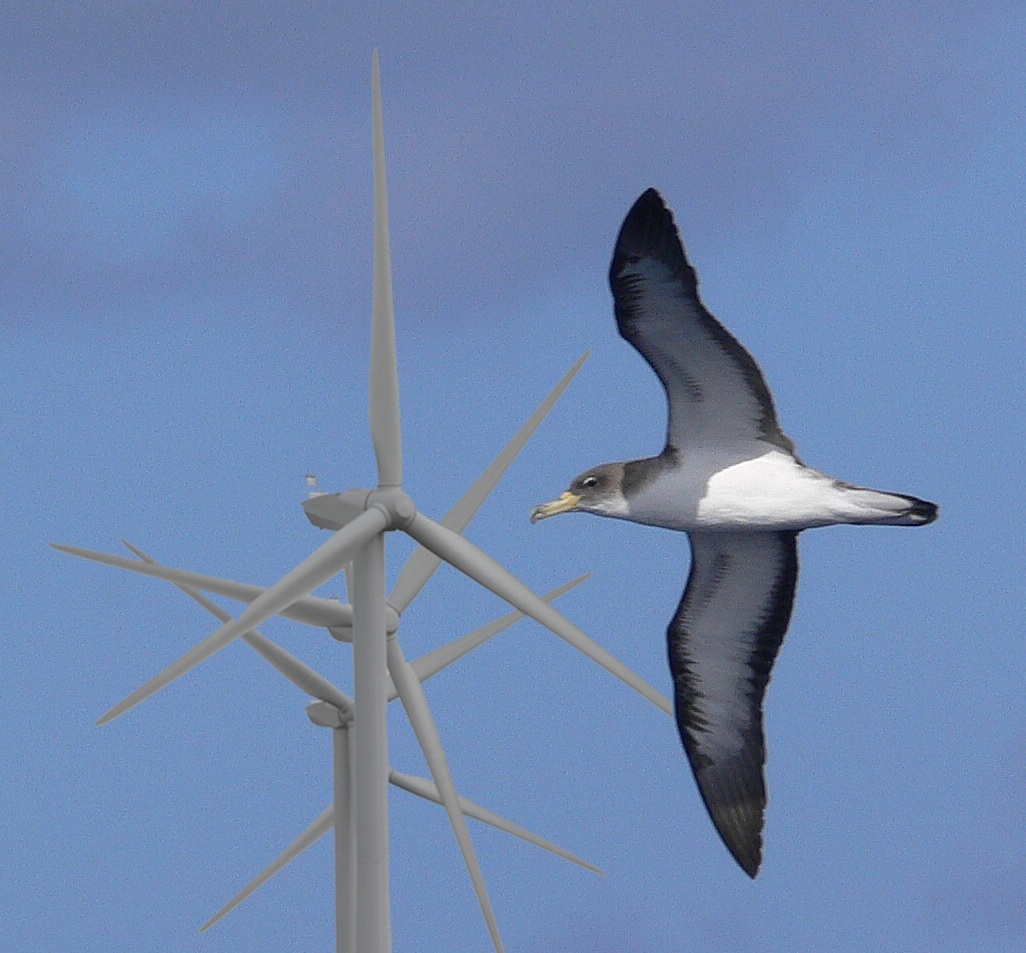How far have we come and where next for research?
The BOU’s recent conference on Marine renewables and birds highlighted the wealth of current research exploring the potential impacts that renewable energy developments may have on birds in the marine environment. Considerable advances in our understanding of how birds use the marine environment have been made in recent years. These have been aided by technological developments – for example, in tracking and survey methodologies – but have also undoubtedly been driven by the need for better information in the scoping, assessment and licensing processes for marine renewable projects. The development of offshore wind energy projects, and more recently the exploration of the potential of wave and tidal developments, have led to a wealth of information on bird distributions being collected to inform assessments, and the instigation of some key research programmes and many individual projects that have aimed to better understand impacts for birds and other taxa.
Here, I provide some of my thoughts on the progress of research in this area, drawing from the conference and some of these recent research programmes. The focus is on offshore wind energy, rather than wave and tidal for which understanding of the research needs is growing hand-in-hand with the development of these technologies. Research needs have been reviewed previously, for example by the Offshore Renewable Research Steering Group, NERC’s Marine Renewable Energy Programme and recently (for offshore wind) through the ‘SOSS’ work programme. Hence, the suggestions are not meant to represent a thorough review, but rather highlight a few key needs and provide comment on the balance between these.
Collision risk with turbines has been the focus of much of the concern regarding the potential impacts of wind farms on birds, both onshore and offshore. Assessment has been aided by the development of collision risk models, although there remain several outstanding information needs, not least that for better information on the avoidance rates of birds approaching turbines. The need to be able to monitor collisions offshore, and thus to be able to validate the avoidance rates used in models, has long been recognised and is the subject of a developing Offshore Renewables Joint Industry Programme project.
Other less direct impacts, such as displacement of birds from areas where wind farms are built, have perhaps received less attention in the past. Recent Dutch- and Danish-based studies, reported at the Marine renewables and birds conference, have helped to develop field and analytical methodologies to assess the potential impacts of displacement. However, there remains a need for broader establishment of such methodologies, such that the magnitude, spatial scale and duration of impacts resulting from displacement are better understood. Uncertainties in predicting impacts mean that the relative potentials for the effects of collision and displacement to impact on bird populations (at a cumulative level) in the marine environment remain unclear.
Renewables have an important role in meeting energy targets, and so there is a clear need to ensure that the current decisions that need to be made through the scoping, assessment and licensing processes (about where and which renewable energy developments are built) use the best available information. Improved data sharing and collation, and regular reviews of the latest information on key issues, such as avoidance rates or seabirds’ likely sensitivities to particular effects, are thus vital.
The outstanding need, however, for the assessment process, conservationists and population biologists alike, is to understand how predictions of the numbers of birds potentially impacted by particular effects play out at population- or protected site-levels. This, of course, is at its most complex at a cumulative-level, as multiple developments may impact different components of populations, at different stages of their annual cycle and through different demographic mechanisms. The use of individual-based models to provide predictions of the potential impacts of disturbance / displacement on seaduck survival rates, and the exploration of the potential for displacement and barrier effects to affect seabird prey resources and energy expenditure and thus reproductive success are two examples where population-level consequences have begun to be explored. Looking forward, there is a need both for further development of such work, that investigates the impacts on populations through an understanding of demographic mechanisms, alongside work that aims to more directly inform present decision-making processes.
Related links
Marine Renewable Energy Knowledge Exchange Programme
BTO – Strategic Ornithological Support Services (SOSS)
Blog with #theBOUblog
If you want to write about your research in #theBOUblog, then please see here.





